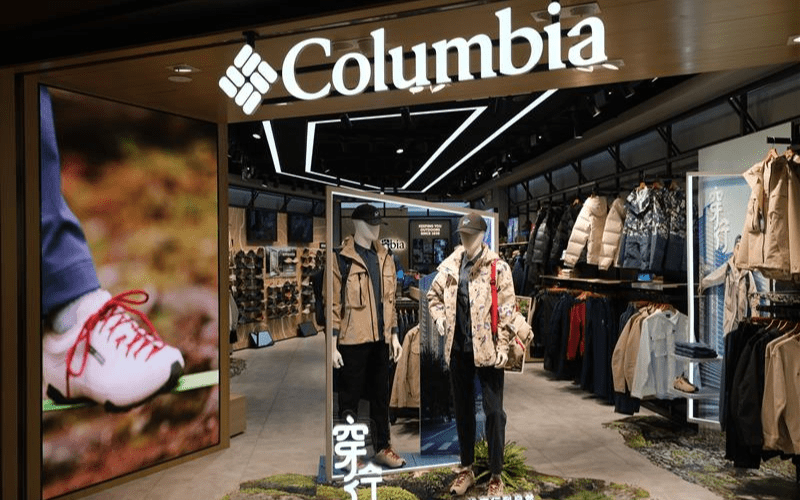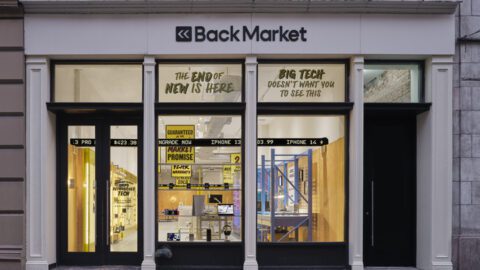This article first appeared in our sister publication Shop Eat Surf Outdoor
International sales drove 6% year-over-year revenue growth at Columbia Sportswear, while the U.S. remains challenging for the company, where it reduced its headcount and restructured. Overall net sales were $605.2 million in the quarter ended June 30.
“In [international] markets, our teams are driving omnichannel growth through compelling product assortments and marketing activations that appeal to younger consumers,” said Columbia CEO Tim Boyle on the company’s Q2 earnings call. “Our results also reflect ongoing challenges in the U.S.”
Geographically:
- U.S. sales declined 2% year-over-year (2% in constant currency) to $335 million. Wholesale orders were up by the low single-digits, while DTC was down by the mid-single digits. The company had 171 stores (152 outlets, 19 branded) in the quarter compared to 163 (145 outlets and 18 branded) in Q2 2024;
- EMEA sales increased 26% (24% in constant currency) to $131 million. Both DTC and wholesale performance were strong and increased by more than 20%, and Columbia’s EMEA distributor had healthy orderbook growth with sales increasing close to 30%;
- LAAP sales grew 13% (12% in constant currency) to $112 million. Sales increased in Japan and even more so in China, where sales rose by the high teens; and
- Canada sales increased 2% (5% in constant currency) to $27 million.
Net income increased 5% to $32.1 million, or $0.58 per diluted share, compared to the same period in 2024.
As part of its effort to improve profitability, Columbia further reduced its headcount. Employees at its U.S. corporate headquarters were primarily impacted, Boyle said.
“Year to date, we have actioned over $70 million in annual cost savings on top of the $90 million we actioned in 2024,” Boyle said. (Columbia’s Director of Corporate Communications Mary Ellen Glynn said in an email that she could not share how many jobs were impacted so far this year.) “This effort is ongoing as we continue to seek additional profit improvement opportunities,” Boyle said.
Columbia Brand Grows, Other Brands Decline
Columbia reported that:
- Columbia brand revenue increased 8% year-over-year (7% in constant currency) to $548 million;
- Sorel revenue declined 10% (11% in constant currency) to $19 million, driven by lower spring ‘25 orders and lower DTC clearance activity compared to elevated PFAs product clearance in the prior year. Sell-through for Sorel’s spring product line, including sneakers and sandals, has been healthy and suggests the brand is stabilizing, Boyle said;
- Prana revenue declined 6% (6% in constant currency) to $21 million. Its brand refresh will build momentum this fall with new product collections and refreshed brand imagery, and the Prana team is developing a clear voice and omnichannel growth strategy, Boyle said.
- Mountain Hardwear revenue declined 7% (7% in constant currency) to $17 million. Full-price growth was more than offset by lower clearance activity compared to PFAs product clearance in the prior year, resulting in a much higher margin, Boyle said.
“As we move into fall, Mountain Hardwear will be activating new snow sports and cold weather trail marketing campaigns that embody their distinctive voice and imagery,” Boyle said. “During this period of tariff disruption, I believe Mountain Hardwear has the opportunity to further strengthen this position in the outdoor specialty channel. Spring ‘26 orders indicate healthy wholesale growth in the first half of next year.”
Columbia Brand Refresh
Columbia will roll out a new global marketing platform and brand identity, ecommerce site and refreshed assortments on Aug. 4, Boyle said.
“This new campaign will bring Columbia back to the roots of what made us an iconic global brand by leveraging our signature irreverence and humor in memorable advertising at a time when much of the outdoor industry looks the same,” he said. “I’m confident that our campaigns will be highly differentiated and drive deeper affinity for the brand.”
This fall will feature refreshed collections like the new Amaze puffer, Boyle said, and the brand will invest in elevated displays in many wholesale and DTC locations.
“I believe the combination of product enhancements, elevated in-store experiences and differentiated marketing will energize Columbia’s brand perception in the U.S. and bring new customers,” he said.
Tariffs ‘Weighing On’ U.S. Wholesale Orders
Like other public companies such as Deckers this quarter, Columbia reported positive wholesale growth, with that channel increasing 14% to $317 million. Meanwhile DTC declined 1% to $288 million. Wholesale growth reflected spring and fall shipment timing, which benefited sales in the quarter, and higher spring ‘25 orders.
But partially because of tariffs, Boyle said he expects wholesale to continue to be challenging in the U.S. for Columbia. Columbia brands have received almost 90% of their projected spring ’26 orders globally. The company’s spring order book reflects flat to low single-digit percent wholesale growth in the first half of ’26. The forecast expects growth among all emerging brands, led by Mountain Hardwear and Sorel.
“For (the) Columbia (brand), international orders reflect sustained growth momentum across our direct and distributor markets,” Boyle said. “In the U.S., tariff uncertainty and soft business trends are weighing on initial orders. While retailers are excited to see Columbia’s new marketing campaign come to life this fall, they’re taking a conservative approach to placing orders for future seasons. As a result, we expect Columbia’s U.S. wholesale business to remain down in the first half of ’26.”
Columbia’s North American wholesale and DTC businesses have been realigned under Peter Rausch, who stepped into the role of general manager of the Columbia brand in North America. Rausch previously oversaw Columbia’s Asian direct business.
2026 Outlook
Boyle previously discussed how tariff uncertainty was impacting the apparel and footwear industries, which are already heavily taxed, on its last earnings call.
“Unfortunately, clarity with respect to U.S. trade policy has not materialized,” he said. “This uncertainty overhangs consumer sentiment and every decision that we make for our U.S. business. We continue to take action to mitigate the risks and financial impact of our tariffs, which represents the largest tax increase the company has faced in its history.”
That said, he expects the company to emerge from this period as a stronger entity. They’re planning the U.S. business cautiously, expecting higher prices for many goods, which will impact demand. Retailers will be cautious. For now, the company will hold prices and absorb much of the additional tariff costs and expects the full impact to be $35 to $40 million in fiscal 2025 — although it’s difficult to estimate at this time, he said.
“By August 1, we will have received approximately 70% of our U.S. fall ‘25 product,” Boyle said. “The remaining yet-to-come fall ‘25 product would be exposed to higher tariff rates beyond the 10% universal rate. We don’t know what the final tariff structure will be, or how long it will last. Lacking tariff rate certainty, we will continue to work all options for offsetting the impact of higher U.S. tariffs on our business.”
In 2025, net sales are expected to range within a 1% decrease to 1% increase, resulting in net sales of $3.33 billion to $3.4 billion, compared to $3.37 billion in 2024.
In the third quarter, net sales are expected to be $904 million to $922 million, representing a decrease of 3% to 1% for the comparable period in 2024. Operating margin is expected to be 7.6% to 9%, compared to operating margin of 12.1% in the comparable period in 2024.















